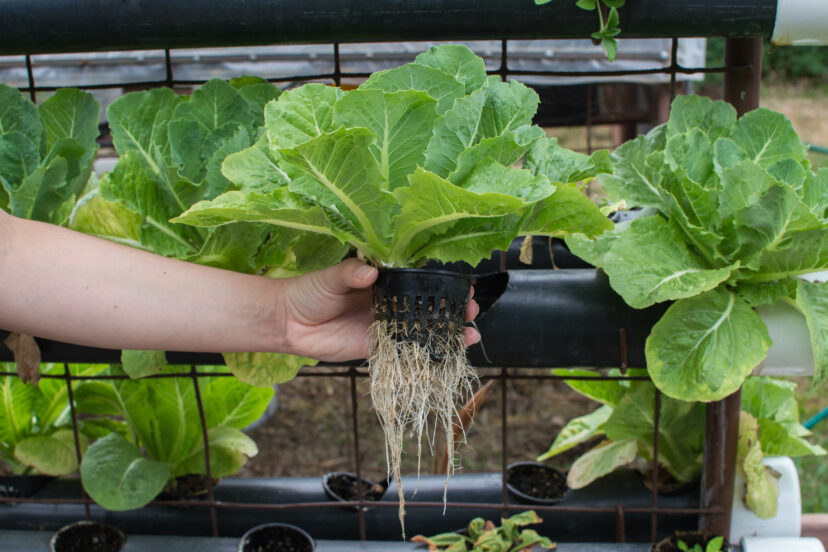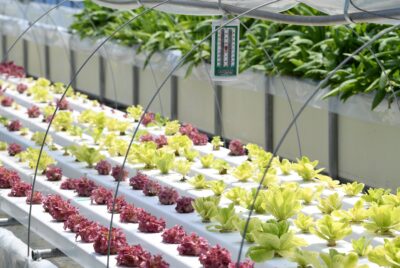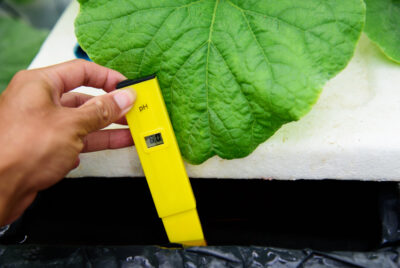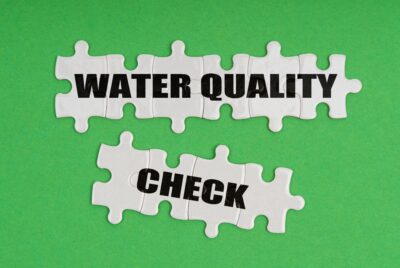DIY Hydroponics
We may earn a commision from purchases made using our links. Please see our disclosure to learn more.
DIY Hydroponics: An Extensive Guide for Indoor Gardening Aficionados.
Introduction to Do-it-yourself Hydroponics
Welcome, dedicated gardeners and plant enthusiasts! The realm of hydroponics presents a riveting alternative to traditional gardening by using water instead of soil as the base for plant growth. Additionally, this soilless wonder isn’t just for commercial farmers; it’s accessible and achievable in the comfort of your own home. Moreover, DIY hydroponics has been catching the attention of urban dwellers and those interested in sustainable practices. It offers an opportunity to engage with a dynamic growing process, while also promising a yield of fresh produce year-round, regardless of outdoor weather conditions.
Deep Dive into the Benefits of a DIY Hydroponics
The allure of hydroponics is not just in its novelty but in the tangible benefits it offers to the modern gardener:
- Space Efficiency: Urban living spaces are often limited, and traditional gardening requires a significant amount of room. Conversely, hydroponics employs vertical farming techniques and compact system designs that enable you to maximize yield in confined areas. Thus, this method becomes an ideal solution for those looking to grow their food in limited spaces, such as city apartments or small patios.
- Accelerated Plant Growth: The direct delivery of nutrients to plant roots in a hydroponic system facilitates a more efficient uptake, leading to faster growth rates. Controlled conditions mean that plants can grow up to 50% faster than they would in soil. Furthermore, the growth is not just quicker; it’s also continuous, as there’s no need to pause between crops to replenish soil nutrients.
- Remarkable Water Conservation: While conventional gardening can be water-intensive, hydroponics showcases a significant reduction in water usage. Through recirculation, these systems can use as much as 90-95% less water than soil-based gardening. The nutrient solution is cycled through the system, with the plants taking up what they need, and the remainder being returned to the system.
Exploring the Types of Hydroponic Systems
The versatility of hydroponics is evident in the variety of systems available, each with unique features and benefits:
- Deep Water Culture (DWC): Ideal for beginners, DWC houses plants in nets or pots with their roots suspended in nutrient-rich, oxygenated water. This system is low-maintenance and allows for easy observation of root health and water quality.
- Nutrient Film Technique (NFT): Designed for more experienced enthusiasts, NFT uses a thin film of nutrient solution flowing over the roots in a slightly inclined trough, ensuring that plants receive ample nutrients and oxygen.
- Ebb and Flow (Flood and Drain): Suitable for a diverse range of plants, this system floods the root zone with nutrient solution at regular intervals, which then drains back, pulling in fresh oxygen for the roots.
- Aeroponics: As the most advanced and water-efficient method, aeroponics mists the roots with a nutrient solution while they hang in the air. This system allows for maximum oxygen uptake and excellent growth rates.
Getting Started: Essential Supplies for DIY Hydroponics
To begin your hydroponic adventure, gather the following essential supplies:
- Containers or Grow Trays: Opaque materials are preferred to prevent algae growth. These containers will serve as the base for your hydroponic setup.
- Water and Air Pumps: Oxygen is vital for root health, and a reliable air pump will ensure that your nutrient solution is well-oxygenated. Likewise, a water pump is also essential for systems like Ebb and Flow, where the solution needs to be moved periodically.
- Hydroponic Grow Lights: If you lack sufficient sunlight, grow lights are a must. LED panels are energy-efficient and have a wide spectrum of light that caters to different plant growth stages.
- Hydroponic Fertilizer: These are specifically formulated for hydroponic systems, containing all the macro and micronutrients your plants will require in an easily absorbable form.
- pH Testers and Adjuster: Maintaining the correct pH is crucial for nutrient uptake. A pH testing kit and pH up or down solutions will help you keep your system balanced.
Building Your First DIY Hydroponics Set-up
- Choose the System: For novices, starting with a simple DWC system might be best.
- Location Selection: Find a space with enough light that is easy to clean.
- Pump Installation: Set up your air and water pumps according to the system’s needs.
- Solution Preparation: Mix your nutrients with water and adjust the pH accordingly.
- Plant Introduction: Place your plants in the system, ensuring their roots make contact with the nutrient solution.
- Monitoring and Adjusting: Observe plant growth and make adjustments to nutrients, pH, and lighting as needed.
Cultivating Success: Advanced Tips for Hydroponic Gardening
- Start Small: Begin with a manageable system to understand the basics before expanding.
- System Cleanliness: Regularly clean your system to avoid the buildup of salts and to prevent diseases.
- Daily Observations: Keep an eye on your plants to catch any issues early.
Selecting Plants and Tailoring Nutrient Solutions
When choosing plants, consider those that are known for performing well in hydroponic systems, such as lettuce, herbs, and strawberries. Be mindful of their nutritional needs; leafy greens, for example, will have different requirements than fruiting plants like tomatoes or peppers.
The Significance of Lighting in Hydroponic Gardens
The growth of your plants is heavily dependent on the quality and quantity of light they receive. Understanding the light requirements for different stages of growth (vegetative vs. flowering) will inform your choice of lights and how you schedule them.
Types of Grow Lights
- Fluorescent lights: Good for leafy greens.
- LED lights: Energy-efficient and long-lasting, great for a variety of plants.
- High-Intensity Discharge (HID) lights: Powerful, but can be expensive and heat-generating.
How to Choose and Position Lights
- Consider your plant’s light needs.
- Position lights close enough for adequate light but not too close to prevent burning.
- Use a timer to simulate natural daylight cycles.
Ongoing Maintenance and Troubleshooting
Regular maintenance involves checking the nutrient solution concentration with an EC meter, cleaning out the system between crops, and replacing or cleaning filters in pumps.
Expanding Your Hydroponic Horizons
With experience, you might choose to explore other systems, integrate automation for easier maintenance, or experiment with growing different varieties of plants.
Repurposing Household Items
You can turn plastic containers, old buckets, and even PVC pipes into hydroponic systems.
10 Budget-Friendly DIY Hydroponics Systems:
1) PVC Pipe System:
Begin constructing your setup by utilizing PVC pipes, and strategically drilling holes within them to create spaces for the plants. Subsequently, water infused with essential nutrients flows through the pipes, delivering nourishment directly to the plant roots. This system is particularly advantageous for cultivating a multitude of plants in a confined area, maximizing your growing space efficiently.
2) Mason Jar Kratky Method:
Initially, this approach involves a passive hydroponic system where you cultivate plants in mason jars brimming with a nutrient-rich solution. Remarkably simple, it’s an ideal method for novices who are eager to grow herbs or petite leafy greens. Furthermore, its simplicity does not compromise its efficiency, making it a favored choice for those new to hydroponic gardening.
3) Plastic Bottle Garden:
Begin by recycling plastic bottles, ingeniously cutting them in half, and inverting the top portion to serve as a makeshift plant holder submerged in a nutrient solution. This method not only promotes an eco-friendly approach to gardening but also stands out as a remarkably cost-effective entry point into the world of hydroponics. It’s an inventive solution that marries sustainability with the practicality of growing your plants.
4) Bucket Deep Water Culture (DWC):
To implement this method, opt for food-grade buckets brimming with a nutrient solution. Here, carefully suspend the plants to ensure their roots are deeply submerged in the nourishing liquid. An integral component is the air pump, which diligently supplies oxygen to the submerged roots, thus fostering robust growth. This technique is highly effective, merging simplicity with the science of hydroponics to enhance plant vitality.
5) Floating Raft System:
Construct a buoyant platform from polystyrene or similar lightweight materials designed to keep the structure afloat. Nestle the net pots with plants into the floating base to secure them. This entire platform then gently rests upon a nutrient-rich solution, providing an excellent environment particularly suitable for nurturing leafy greens. This method optimizes space and resources, offering a seamless integration of plants and their life-sustaining nutrients in a serene, floating garden setup.
6) Gutter System:
Upcycle disused rain gutters, repurposing them into efficient hydroponic channels. Install them horizontally and tier them at varied elevations to facilitate a gravity-fed water flow from one level down to the next. This method ensures that each plant receives its share of the nutrient-rich water, making this system a resourceful and space-efficient solution for growing a variety of plants in limited spaces.
7) Fish Tank Hydroponics:
Revitalize an unused aquarium by converting it into a vibrant hydroponic garden. Fill the tank with a balanced nutrient solution and conveniently suspend the plants above in net pots or set them upon floating platforms. This innovative configuration allows you to observe your garden’s root systems in action, while effectively utilizing the tank as a self-contained, nutrient-rich reservoir.
8) Wick System Using Fabric:
Utilize a simple piece of fabric as a wick to seamlessly transport nutrient solution from a reservoir directly to the plant’s root zone. This passive hydroponic system requires minimal setup and maintenance, making it perfectly suited for cultivating herbs and small vegetables. It’s an especially good option for those seeking an uncomplicated introduction to soilless gardening.
9) 5-Gallon Drum System:
Leverage the capacity of large 5-gallon drums to serve as substantial reservoirs in a Deep Water Culture (DWC) system. These drums offer extensive space for root development and are robust enough to support larger plant species. This system is an excellent choice for those looking to scale up their hydroponic gardening while still maintaining an efficient use of space and resources.
10) Aquaponics System:
This innovative approach merges the techniques of hydroponics with the principles of aquaculture, creating a symbiotic environment where fish and plants thrive together. In this system, fish are raised and their waste is utilized as a natural nutrient source for the plants. Conversely, the plants play a crucial role in purifying the water, which is then recirculated to the fish. While the complexity of managing an aquaponics system is higher compared to traditional hydroponics, the benefits of creating a sustainable, self-supporting ecosystem are substantial, offering a holistic approach to gardening and fish farming.
You can tailor each of these systems to fit your space and needs, and they provide a great way to get started with guerilla gardening with water. Whether you have a small balcony or a spacious backyard, there’s a hydroponic solution that can work for you!
Conclusion: The Infinite Potential of DIY Hydroponics
Embarking on a DIY hydroponic journey is an enriching endeavor that can lead to a deeper connection with the food you consume. It’s a step toward self-sufficiency, a testament to human ingenuity, and a gateway to an environmentally conscious lifestyle. Embrace the process, learn from each harvest, and watch not just your plants, but your skills and passions grow.
FAQs
Can I set up a personal hydroponic garden on a low budget?
Absolutely! You can repurpose household items like plastic containers or tubs as grow trays. There are also budget-friendly nutrient solutions available, and you can start with just a few plants to keep initial costs low.
What are the best plants to start with for a beginner in DIY hydroponics?
Leafy greens like lettuce, spinach, and herbs like basil and mint are fantastic starters. They are resilient, grow quickly, and don’t require too much attention, making them ideal for beginners.
How often should I change the nutrient solution in my system?
It’s generally good to change the nutrient solution every two to three weeks. However, this can vary depending on the type of system and plants you’re growing. Keep an eye on the color and clarity of the solution, and test the nutrient levels regularly.
Can I use natural sunlight for my personal indoor hydroponic garden system?
Yes, if you have a sunny spot like a window that gets plenty of direct sunlight. However, you might still need supplemental grow lights, especially during the shorter days in winter.
How do I control pests in a hydroponic garden?
Good hygiene is crucial. Clean your system regularly and remove any dead plant matter promptly. If pests appear, you can use organic insecticidal soaps or introduce beneficial insects like ladybugs that prey on harmful pests.
Unleash your green thumb with easy homemade hydroponics. Transform spaces into vibrant gardens. Start your journey now!





Comments are closed.